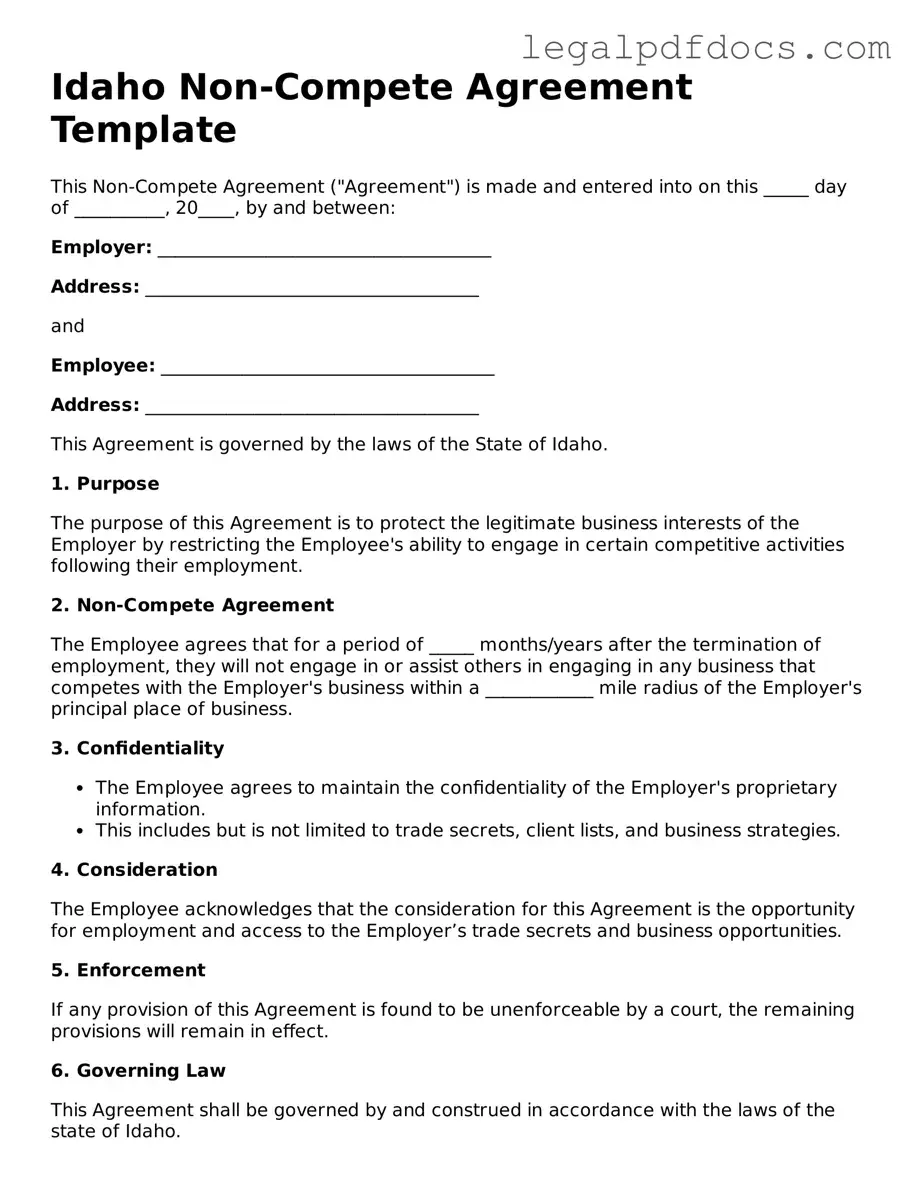Official Non-compete Agreement Form for Idaho
A Non-compete Agreement in Idaho is a legal document that restricts an employee from engaging in business activities that compete with their employer after leaving the company. This form is essential for protecting trade secrets and maintaining a competitive edge in the market. If you’re ready to secure your business interests, fill out the form by clicking the button below.
Open Non-compete Agreement Editor Here
